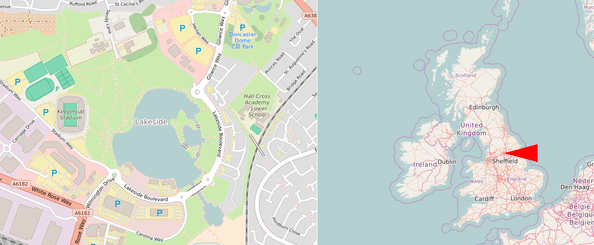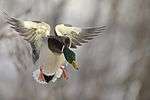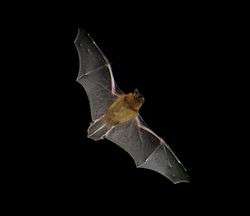Doncaster Lakeside
Coordinates 53°30′32″N 1°06′26″W / 53.5088°N 1.1071°W

Doncaster Lakeside is a recreational area and shopping complex centred on a lake, around 3 km or 2 miles SE of Doncaster town centre, in the area of Doncaster Metropolitan Borough Council. In recent years it has been expanded and modernised. After completion, the area has settled vegetation, paths, bridges, notice boards and public gatherings.
Exercise
A popular path for walkers, joggers and cyclists surrounds the lake. It follows the perimeter of the lake and is about 2 miles or 3.5 kilometres long.
Wildlife
Many species of bird and fish have established themselves here and at the nearby Potteric Carr nature reserve, which offers bat, spider and other guided tours, has included this area in its extended walks about wildlife in the area.
Birds
Several species have been recorded here, including Gadwall, Canada Geese, Moorhens, Cormorants, mallard, Tufted ducks, Northern Shovellers, Gulls, Coots, Great crested Grebe, Sand Martin,[1] Temminck's Stint and Pochards. Raptors have also been seen here, including Osprey, Kestrel and Horned owl.
 Mallard duck in flight |
_(14379014972).jpg) Shovellers and pochard ducks |
 Adult and young coot and eggs |
 Tufted ducks |
Crested grebes |
|---|
Swans
This lake is home to a flock of mute swans which have the gene for leucism.
 Left, mute swan cygnet (grey feet turning darker with age);
right, Polish swan variant with pinkish hue to feet |
 Mute swan with lighter (pinkish) feet |
 Mute swan (darker hue feet) |
 Mute swans at Doncaster Lakeside (lighter pinkish hue feet) |
|---|
In around 1800 some swans were brought in from Poland and were called Polish swans. At first, they were thought to be a new species, which was named cygnus immutabilis. Compared to normal mute swans, these swans are whiter, and their legs are pinkish, not dark. Later, modern science discovered the variant in the swans' DNA and confirmed that it was not a new species but a different allele.
Bats
| After sunset the resident bats show their themselves. Pipistrelle, Noctule, Daubentons, Brandts and Natterers have been heard on walks around Lakeside.[2]
Bats cannot be heard by humans. A bat detector is need to tune into the frequency of each species of bat. |
 Bat detector |
Bat sound from Eptesicus serotinus |
|---|
 Pipistrelle in flight |
 Noctule bat at roost |
 Daubenton's bat |
 Natterer's bat |
Brandt's bat |
|---|
Sports
Annual water sports events take place here, to the irritation of nature lovers and interest groups.
Annual dragon boat racing has also been promoted. Various groups have used the lakeside track as cycling tours for their events.
Action Groups
This area is monitored by the Lakeside Wildlife Action Group.
Other groups include Birdwatch, Swanwatch, Butterflywatch, Frogwatch, as well as walking and cycling groups.
The Lakeside Wildlife Action Group recently erected informative notice boards, sponsored by a local accounting firm. Other notice boards feature walking/cycle path, location map, scan codes and walking trials and these boards are managed by Doncaster Metropoliton Borough council.
References
- ↑ "Doncaster Birding". www.doncasterbirding.co.uk. Retrieved 2016-10-02.
- ↑ "UK Bats - Bat Conservation Trust". www.bats.org.uk. Retrieved 2016-09-27.